What is this note about and who is it for?
I briefly present the structure of a typical analyst report about an opponent’s attacking corner kicks in soccer. Then, I walk through an example of this type of report, focusing on Spanish club SD Eibar.
This note will interest you if: * You are new to soccer match analysis and curious about what a report on attacking corner kicks looks like. * You are a match analyst and are interested in similar work. * You like the beautiful game.
This note is an expanded version of an assignment I completed as part of FC Barcelona’s Innovation Hub course on Set Piece Analysis, which is a requirement for their Certificate in Advanced Football Tactical Analysis. In the last section you will find additional information, including the orginal powerpoint presentation, supporting videos, and tools used.
Content and structure of a corner kick analysis report
In elite soccer, match analysts support the coaching staff with analyses of their own team and the opponents. One of their duties is to prepare reports focusing on the opponent’s set pieces, of which corner kicks are one component. Corner kick analyses can be further divived in defensive (when the opponent is defending against a rival’s corner kick) and attacking (when the opponent is taking the corner kick). The content and structure of these two views is similar, but here I focus only on the attacking corner kicks.
The content of the report will strongly depend on the specific interests of the coaching staff. The format and structure must also adapt to their needs: some coaches prefer a short video and verbal talking points; others prefer a PowerPoint presentation with embedded videos; some coaches are more quantitative than others, which affects the balance of numbers and images in the report. Finally, there should be absolute clarity on the timeline for delivering the reports to the coaching staff. It is the job of the analyst to align the content, format, and deadline of the report to the coaches’ needs.
Notwithstanding the need to adapt the report to the coaches, there are recurring, fundamental aspects of attacking corner kicks that will be of interest to just about any coach in any club. Your report must identify how the particular opponent interprets these fundamentals.
Main characteristics to observe in attacking corner kicks
- Structure: How is the team organized just before the kick?
- In parallel lines inside/outside the small area? In a “conga line” down the middle? Clustered at the near/far post?
- How many players in the small area / penalty area?
- How many at the top of the area / preventive coverage?
- What are the player locations on short kicks?
- Trajectory: How is the ball kicked?
- Inswinging
- Outswinging
- Flat
- Short/indirect
- Delivery location: Where does the ball arrive on the pitch?
- Near post
- Far post
- Middle of small area
- Penalty kick spot
- Are attempts direct or do they arise from second balls/indirect flicks?
- Habitual kickers: Which players usually take corner kicks?
- Are they right/left footed?
- Consequences of right/left footedness and side of the corner kick on the inswinging/outswinging trajectory
- Habitual receivers: Which players usually receive the ball and/or attempt a shot?
- What are their main characteristics?
- Do defenders push up to attempt to score?
- Movements: How, where, and when do the players move during the kick?
- Movement before the kick? Or only immediately before?
- Any blocks, decoy runs, attempts to drag defenders to create space?
- Performance: Summary counts and statistics on the team’s success in creating chances and scoring goals from corner kicks.
- Patterns and correlations: Point out any correlations between the above characteristics. Example: inswinging kicks from the right of the goal to the near post yield more shots on goal.
Tips on structuring the report
- Keep it short! Coaches have limited time, and need to digest various reports addressing various aspects of the game, not just corner kicks. So, learn what the coaches are most interested in, focus only on those points, use short sentences, images, and short! videos cohesively to convey the information: just few PowerPoint slides or Word pages will do the job.
- Descriptive, not prescriptive: stay in your lane! You should focus on reporting the facts that describe the habitual behaviors of the opponent team. It is up to the coaches to decide how to use that information and prescribe training sessions and game plans. With time, as you get to know each other, you will gain the trust of the coaching staff and they will start asking you for recommendations, suggestions, etc. At first, though, stay in your lane, listen, and learn from the coaches how they use the information you give them.
Case study - Attacking corner kicks by SB Eibar
Initial structures
- Line-up: 1-4 line structure at the start of the corner kick play
- Number of players in the area: 1 player in the small area, 5 total players in the area, 6 when the score is unfavorable.
- Clearing and defense: 2-3 players at top of area; 1-2 in defense.
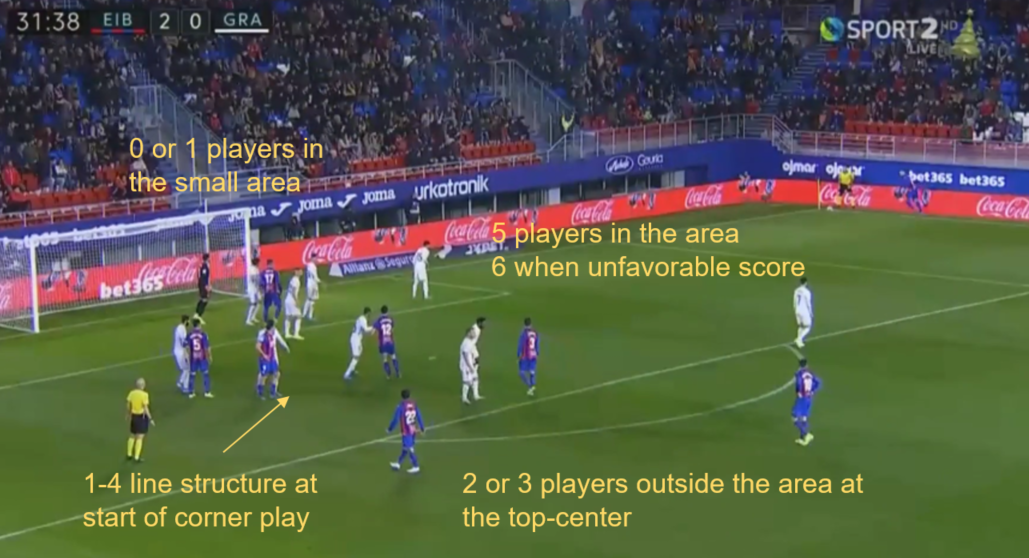
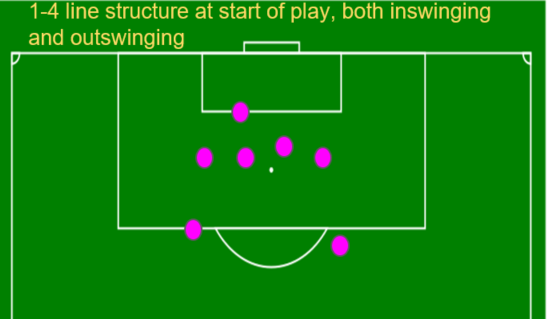
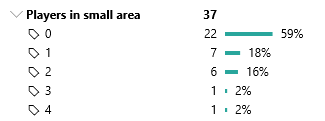
|

|
Ball trajectory and delivery location
- Mostly direct kicks with in/out swinging trajectories: short passes and flat delivery used infrequently
- Only right-footed kickers, therefore corners on the right are inswinging, corners on the left are outswinging.
- Inswinging delivered to the near post
- Outswinging delivered to the penalty zone/far post (penalty zone = central zone between the small area and the penalty spot)
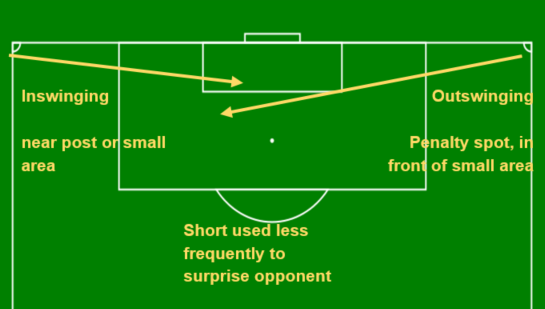
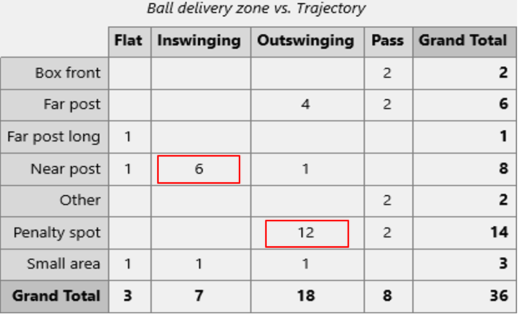
Habitual player functions: kickers, receivers, supporting
Kickers
- #14 - Fabian Orellana (winger)
- #21 - Pedro Leon (winger)
- Only right-footed kickers
- They kick from both sides
Receivers

|
#5 - Xavi Etxeita, center-back, 1.86 m, good with headers |

|
#9 - Sergi Enrich, center-forward, 1.83 m, good with headers, strong, good at maintaining position |

|
#17 - Kike Garcia, center-forward, 1.86 m, good with headers |
Additional players in the area (drag, block)
- #6 - Sergio A.
- #8 - P. Diop
- #12 - P. Oliveira
Players at the top of the area (recover, shoot)
- # 22 - Inui
- # 16 - de Blasis
- # 10 - Exposito
Movements
- In general: players align immediately outside the small area in the penalty zone and rush in for an attempt or to drag the opponents to create space.
- On inswinging corners: ball to near post for direct attempt or flick to second player in small area. Overloading near post to create attempt or create space for players in small area.
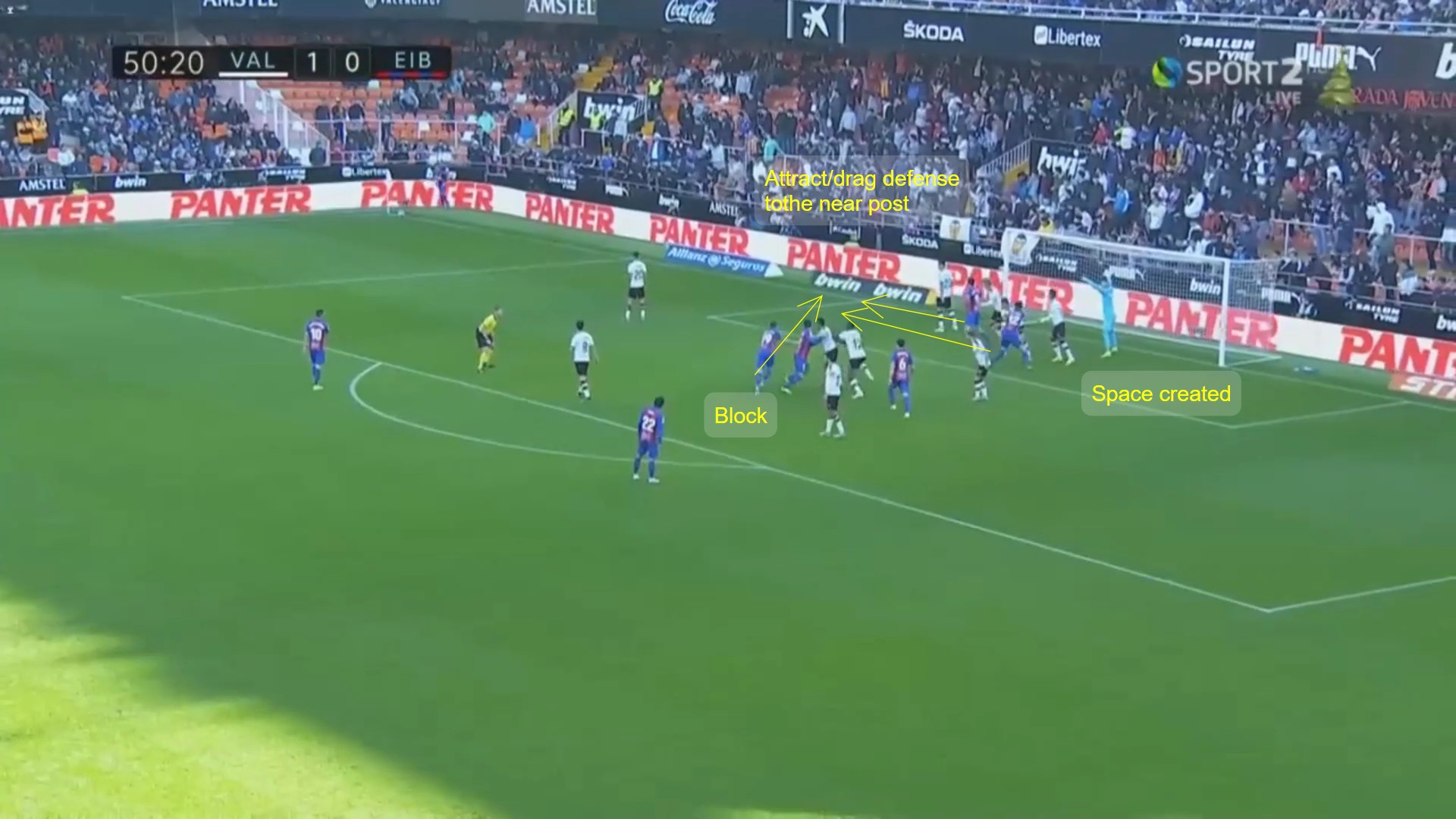
- On outswinging corners: direct ball to far post/penalty zone; fake movements to the near post to create space at far post.
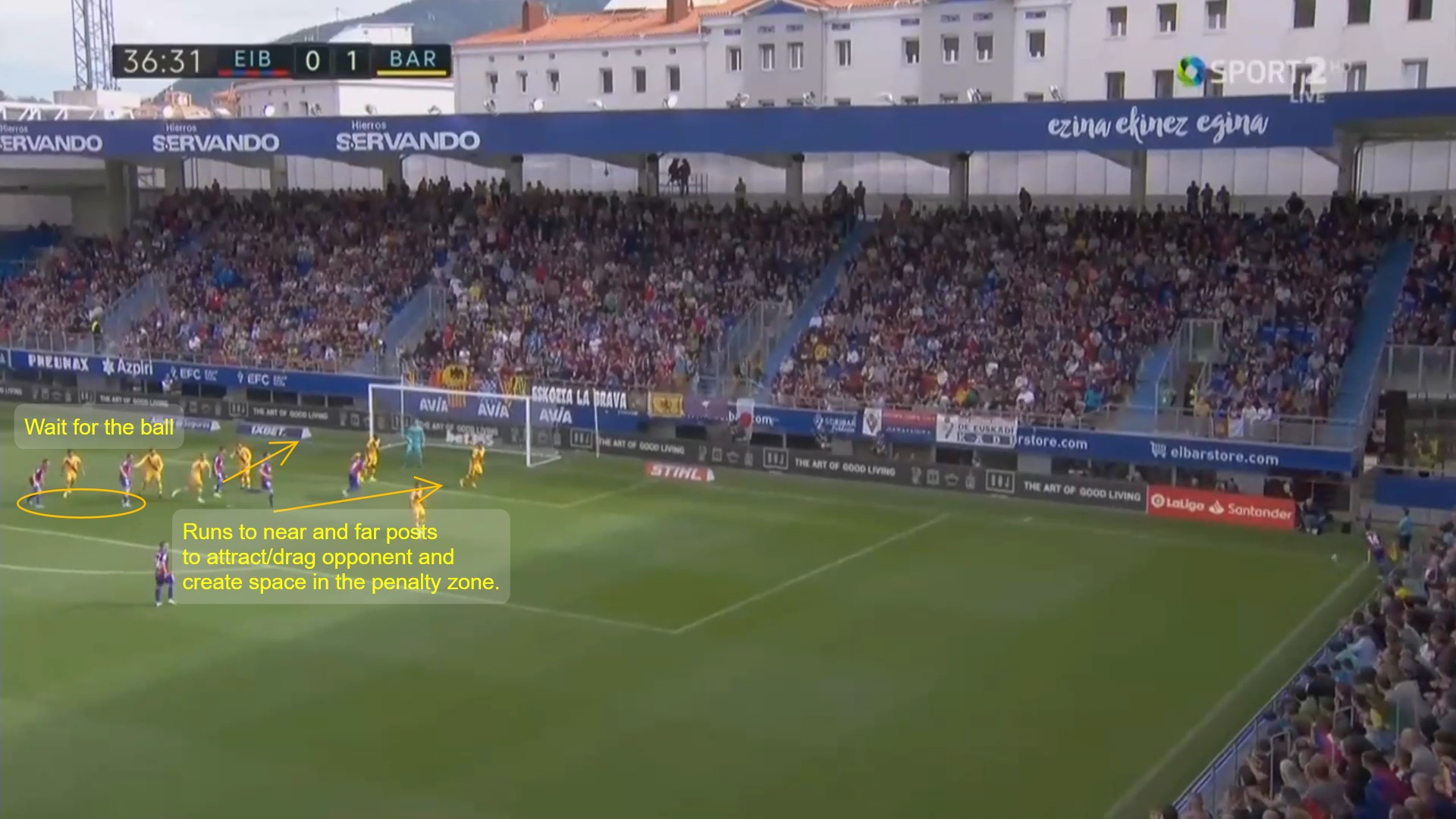
Performance Summary
- Most of the attempts are generated by deliveries to the near post or penalty zone
- Inswinging is more effective: inswinging kicks produce more attempts and goals than outwsinging.
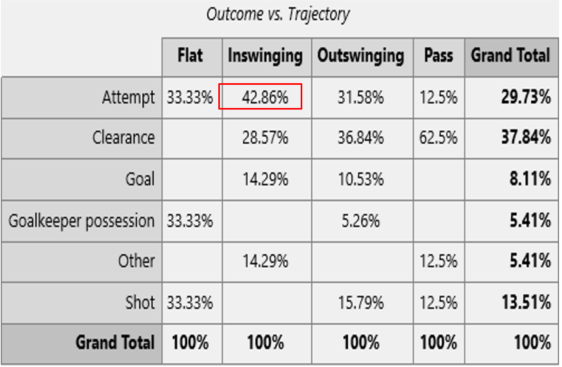
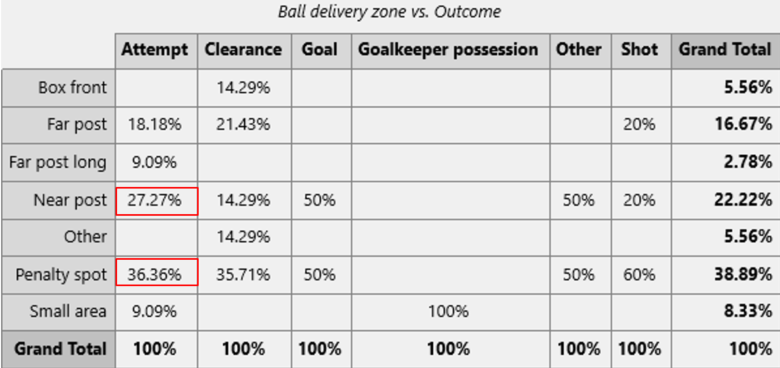
Glossary: * Attempt: a kick succesfully delivered to an attacking player * Shot: an attempt that results in a shot (on goal or nearby) * Clearance: the defense clears the ball away
Method and Tools
FC Barcelona’s Innovation Hub course on Set Piece Analysis, which is a requirement for their Certificate in Advanced Football Tactical Analysis provided a vido clip of 37 attacking corner kicks by SD Eibar. I tagged all the corner kicks with the DartFish Pro S sports performance analysis software. I designed my own tagging panel for this activity
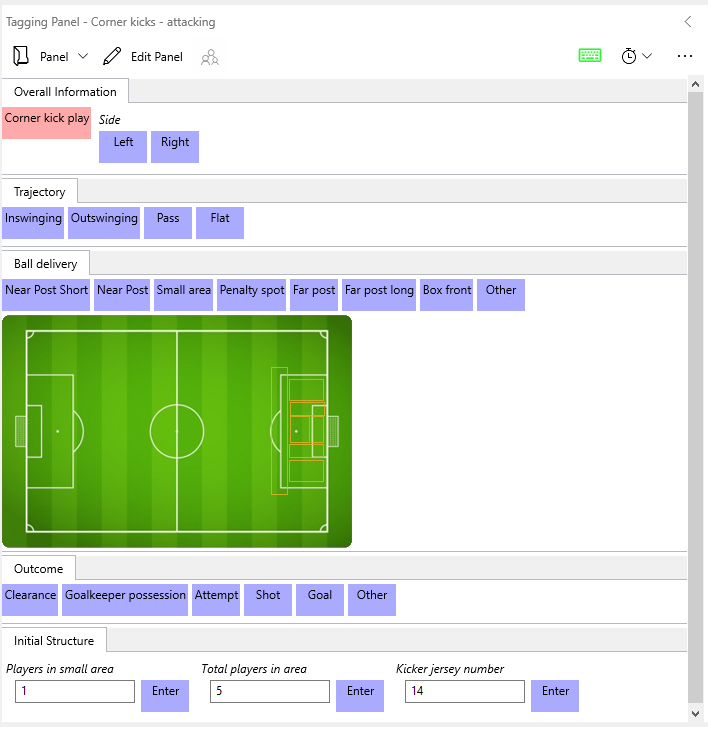
After tagging all corner kicks, I used DartFish to tabulate the summary counts of corner kick types and to create the graphics effects for the selected clips. I searched for additional information on specific players that I did not have from the clips (names, positions) on Tranfermarkt. I then put everything together in a PowerPoint presentation. The target audience of the presentation (except for the title slide) was the coaching staff of SD EIbar’s next opponent (presumably Barcelona).
In this Google Drive Share you will find the original video clip, the selected corner kisks with graphics, the PowerPopint presentation, and the tagging panel that you can load in DartFish to tag your own attacking corner kicks. If you use any of these materials for your own work, especially the tagging panel, I’d appreciate an acknowledgment with a link to my website. You may use these materials except that you may not, under any circumstances, use any of them, in whole or in part, as your assignment for the course on Set Piece Analysis offered by FC Barcelona’s Innovation Hub (you must do your won work for that one).
Acknowledgements
I want to thank Lorenzo Favaro, Marco Giustini and the rest of the instructors at SportAnalisi for making DartFish available, for their guidance in its use, and for the invaluable lessons in match analysis and football tactics (grazie ragazzi!).